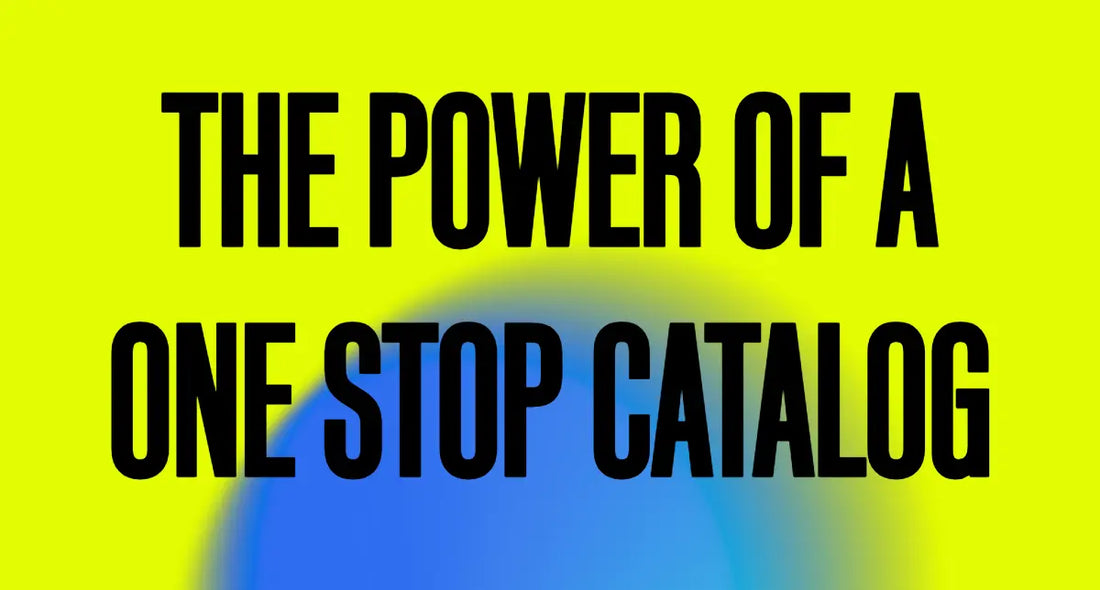
Getting Overlooked for Sync? The Problem Might Be Your Licensing Rights
Share
In the fast-paced world of music supervision, time is the ultimate luxury. Imagine sifting through hundreds, even thousands, of tracks to find that perfect sonic match for a crucial scene. Now imagine finding that perfect track, only to discover you need to contact multiple rights holders to secure the necessary licenses. Frustrating, right?
This is where the magic of a one-stop catalog comes in. For music creators looking to maximize their sync licensing potential, understanding and building a one-stop catalog isn't just beneficial—it's a game-changer.
What Exactly is a "One-Stop" Catalog?
Simply put, a "one-stop" piece of music is a track where all rights are controlled and cleared by a single entity. This means the owner of the track owns and controls both the master recording rights (the sound recording itself) and the publishing rights (the underlying musical composition and lyrics).
Think of it like this:
- Master Rights: Who owns the specific audio file you're listening to? This is usually the recording artist and/or the label that financed the recording.
- Publishing Rights: Who owns the actual song—the notes, melodies, harmonies, and lyrics? This is typically the songwriter(s) and their music publisher(s).
For a track to be considered "one-stop," the same person, company, or library must own or exclusively administer both of these sets of rights.
Why One-Stop Music is a Music Supervisor's Dream
Music supervisors are tasked with the often-herculean job of finding the right music, negotiating licenses, and ensuring all legal bases are covered—all under tight deadlines and often with budget constraints. A one-stop catalog significantly streamlines this process in several key ways:
1. Speed and Efficiency:
Imagine a supervisor finds a track they love in your catalog. If it's one-stop, they know they only need to negotiate and secure a license from you. There's no need to track down separate master and publishing rights holders, which can involve lengthy searches, communication delays, and potential roadblocks. This speed and efficiency are invaluable, especially when deadlines are looming.
2. Simplified Clearance:
Dealing with multiple rights holders means multiple contracts, multiple negotiations, and multiple invoices. This adds layers of complexity and administrative burden to the supervisor's already demanding workload. One-stop music eliminates this hassle. One agreement covers everything, making the clearance process straightforward and less prone to errors.
3. Predictable Costs:
When dealing with separate rights holders, negotiating fees can become complex. Master and publishing entities might have different rate cards and negotiation styles. With a one-stop track, the supervisor has a single point of contact for fee discussions, leading to a potentially faster and more predictable negotiation process.
4. Reduced Risk:
In the world of licensing, the risk of copyright infringement is a serious concern. When all rights are controlled by one entity, the music supervisor has greater confidence that all necessary permissions are in place, reducing the risk of legal complications down the line for their project.
5. Budget Friendliness (Potentially):
While not always the case, sometimes licensing a one-stop track can be more budget-friendly overall due to the simplified negotiation and reduced administrative overhead for the licensing entity. This can make your one-stop catalog more attractive, especially for projects with tighter budgets.
How to Build a One-Stop Catalog
For music creators, the benefits of having one-stop tracks in their catalog are clear: increased licensability and a higher chance of placements. Here are a few ways to build your own one-stop collection:
- Retain Full Rights: When creating new music, aim to retain both the master and publishing rights. Avoid signing away your publishing to a separate entity, especially for tracks you intend to heavily pitch for sync.
- Buy Out Co-Writers/Performers: If you collaborate, consider having agreements in place where you buy out their publishing share or master recording rights to create a fully controlled track.
- Focus on Instrumental Music: Instrumental tracks inherently simplify the publishing side, as there are no lyrics involved. This can be a strategic way to quickly build a one-stop catalog.
- Careful Sample Clearance: If your music uses samples, ensure you have legally cleared both the master and publishing rights for those samples, effectively making your new track one-stop.
- Work with One-Stop Libraries: Consider partnering with music libraries that specifically focus on and market one-stop music.
The Future is One-Stop
As the demand for content continues to explode across various media, the efficiency and simplicity offered by one-stop music will only become more valuable to music supervisors. By understanding its power and actively working to build your own one-stop catalog, you can significantly increase your chances of landing those coveted sync placements and unlock new revenue streams for your music.
Need help finding background music that boosts engagement? 🎧 Explore our licensing catalog or work with Playbutton Media to get custom-curated music tailored to your content goals
